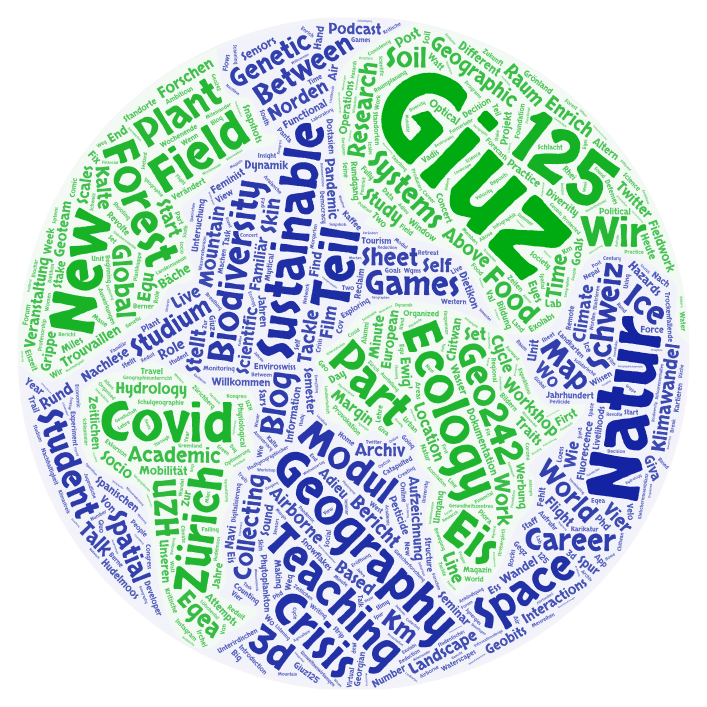#125: The 125th and last
Our anniversary year is drawing to a close, not much went as planned and a lot had to be cancelled due to Covid-19. Nevertheless, 124 blog posts were published over the course of 2020 - and this 125th concludes the year.

Some contributions had been planned for a long time, many originated more spontaneously from various activities, random coffee talks and other opportunities. All in all, it is a colourful painting of numerous activities that all belong together - as different as they may be.
Personally, I am pleased that water appears in so many contributions, and indeed in the most varied forms: frozen as (no longer so) eternal ice, as part of landscape images on Instagram or as a central part of socio-ecological systems. Most of us at GIUZ are likely to feel the same, but for their speciality, because our research areas are so closely interwoven. In one way or another, it's always about soil, ice, remote sensing, globalization, maps, politics, sociology, visualization or economics. For me, this is precisely what defines geography, the breadth of approaches we use to look at our environment in its spatial variation.
No one has probably overlooked the 'key visual' of our anniversary year. Daniel Tschanz had designed different variants from which this picture then emerged.

I think this key visual was an excellent choice. I myself was not involved in this discussion, which now enables me to let my thoughts flow freely. The hydrologist in me sees the water cycle and the rings that appear when you throw a stone into the water. As the department head, I see various cycles, openness and movement - and a 125-watt light at the end of a tunnel.
We will continue the blog, even if not quite as frequently. This format has proven to be a way of providing information about our activities in research and teaching. Furthermore, all of us who have contributed had to struggle with the challenge of how to communicate our work appealingly to a broader audience. Some succeeded on their own; others benefitted from the support by our blog editor Magdalena Seebauer. We all learned a lot in the process! With this in mind, I am looking forward to the painting which the next 125 blog posts and the associated activities at GIUZ.
Jan Seibert